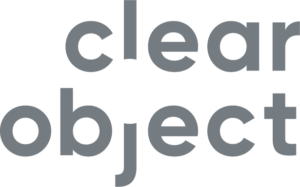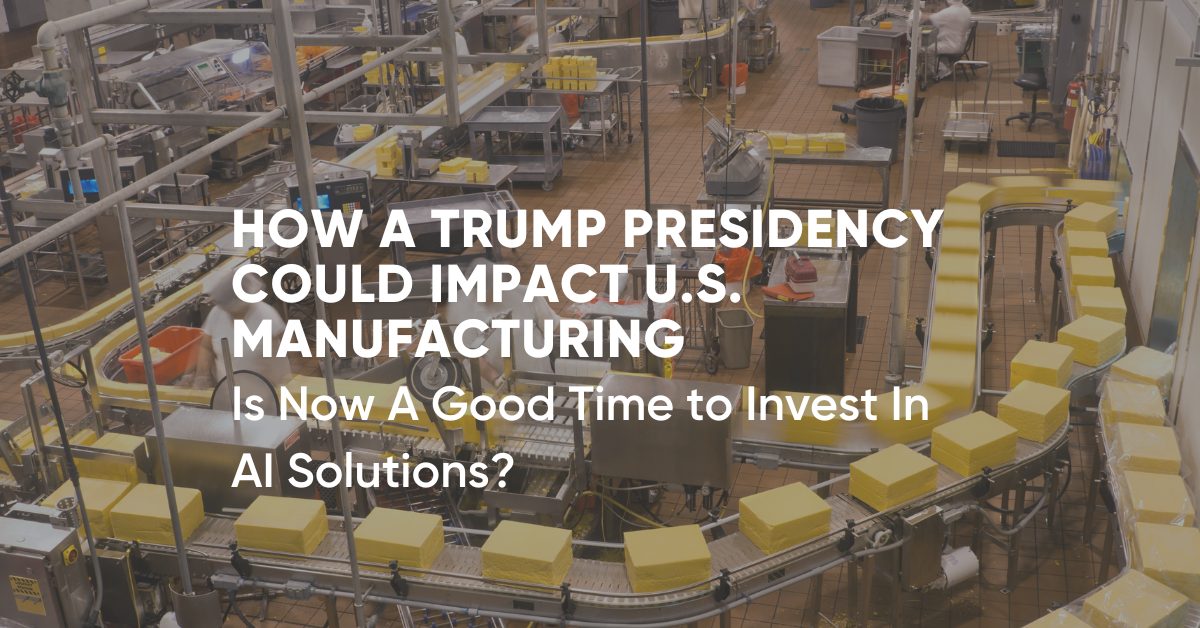With the return of Donald Trump to the White House in 2025, many in the manufacturing sector are speculating on how his policies might shape the industry and investment in emerging technologies, including artificial intelligence (AI) and Vision AI solutions. His previous term saw a strong push for reshoring jobs, tax cuts for businesses, and trade policies aimed at bolstering American manufacturing. For manufacturing leaders, understanding what may lie ahead is critical, as AI and Vision AI technology offer ways to improve efficiency, quality, and safety amid a tightening labor market.
This analysis examines how U.S. manufacturers fared under Trump’s first presidency, where he might take policy, and how investing in Vision AI can benefit the industry regardless of the political landscape.
The State of U.S. Manufacturing under Trump’s First Term: Key Data Points
To understand the potential impact of another Trump presidency, it’s valuable to reflect on his first term’s economic data and outcomes for U.S. manufacturing.
Job Growth and Wage Increase: During Trump’s initial years in office, manufacturing jobs grew significantly. According to the U.S. Bureau of Labor Statistics, 500,000 new manufacturing jobs were created between January 2017 and December 2019. Additionally, real hourly wages for production and nonsupervisory employees increased slightly. This period of growth, however, was cut short by the COVID-19 pandemic, which led to a sharp downturn.
Tax and Trade Policies: Trump’s Tax Cuts and Jobs Act of 2017 lowered the corporate tax rate from 35% to 21%, intending to stimulate business investment. The administration also implemented tariffs on imported goods, notably steel and aluminum, to encourage domestic production. While these policies provided some protection for U.S. manufacturers, they also led to increased material costs, prompting mixed responses from the industry. A December 2019 survey by the National Association of Manufacturers (NAM) found that 66% of manufacturers felt optimistic about the industry’s future, though many remained cautious about tariffs.
Supply Chain Disruptions: Trade wars with countries like China brought additional challenges. While reshoring gained traction, supply chain disruptions became prevalent, underscoring the need for modern, flexible solutions, such as Vision AI, to boost operational efficiency and reduce dependency on international suppliers.
These past trends suggest that a Trump presidency could once again focus on reshoring, trade restrictions, and tax relief. For manufacturers, this signals a likely emphasis on domestic production capabilities and potentially another push to adopt advanced manufacturing technologies, such as Vision AI, to stay competitive.
Why Now is the Time for U.S. Manufacturers to Invest in Vision AI
As U.S. manufacturing contends with workforce shortages, global competition, and rising demand for high-quality products, AI technology, particularly Vision AI, has emerged as a game-changer. Vision AI solutions, which utilize computer vision to analyze images and detect patterns in real-time, bring several benefits to manufacturing:
Increased Efficiency: Vision AI enables faster and more accurate quality inspections, allowing manufacturers to automate processes previously dependent on human labor. By identifying defects earlier in production, Vision AI helps reduce scrap and rework costs, improving operational efficiency and reducing waste.
Enhanced Quality Control: Quality demands are higher than ever, and Vision AI can significantly improve quality assurance processes. By capturing and analyzing images on the production line, Vision AI can detect issues at the micro-level, helping manufacturers ensure products meet specifications. This level of precision not only improves product quality but can also safeguard brand reputation in competitive markets.
Labor Market Relief: Vision AI offers a solution to the tightening labor market, a longstanding issue in U.S. manufacturing. According to Deloitte, nearly 2.1 million manufacturing jobs could go unfilled by 2030 due to skills gaps and workforce shortages. Vision AI can fill critical roles, enabling manufacturers to do more with fewer workers by automating labor-intensive tasks, helping bridge the workforce gap.
Increased Safety: Beyond efficiency, Vision AI can contribute to a safer workplace. Automated inspections and remote monitoring reduce the need for workers to perform potentially hazardous tasks. Additionally, Vision AI systems can alert managers to safety risks in real-time, allowing preventive measures before incidents occur.
The Potential Policy Impact on AI and Technology Investment
With Trump returning to office, U.S. manufacturers could see renewed tax incentives and subsidies for technology investments, including AI and Vision AI. Here’s how these policies could play out for manufacturing:
Potential Tax Relief: A second Trump administration might further reduce corporate taxes or introduce additional tax incentives for technology adoption, as he has long championed lower taxes as a pathway to economic growth. For manufacturers, tax incentives could make Vision AI technology more affordable, speeding up adoption across the sector.
Encouragement of Domestic Technology: Trump’s emphasis on “America First” policies suggests that investments in U.S.-made technology and equipment, including Vision AI tools, may receive preferential treatment or incentives. This could help U.S. manufacturers access cutting-edge technology without relying on imports, further strengthening the domestic supply chain.
Enhanced Regulatory Flexibility: Reduced regulations on technology adoption could spur faster and more agile deployments of Vision AI in manufacturing. This flexibility could be especially beneficial for companies seeking to implement AI solutions across multiple facilities and production lines.
Vision AI: A Strategic Investment for the Future of U.S. Manufacturing
While the policy environment could drive investment, Vision AI’s inherent advantages provide a clear path to resilience for manufacturers:
Sustainability Goals and Cost Savings: Vision AI can contribute to a more sustainable production process, reducing waste and minimizing carbon footprints by catching defects early and streamlining production. This alignment with sustainability goals not only appeals to investors but also supports compliance with evolving environmental regulations.
Adaptability to Consumer Demands: Vision AI allows for faster adaptation to changing consumer preferences. For example, by enabling real-time product inspections, Vision AI can support smaller production runs with customized quality checks, catering to demand for personalized or premium products.
Competitive Differentiation: U.S. manufacturers adopting Vision AI now can gain a technological advantage, positioning themselves to compete more effectively with international competitors who may also be eyeing AI advancements.
Investing in Vision AI to Navigate Uncertainty
A Trump presidency brings a degree of uncertainty, but manufacturers can take proactive steps to bolster resilience and growth. Investing in Vision AI can provide efficiency, quality, and safety benefits that help manufacturers adapt to shifts in trade policy, tax incentives, and labor market trends. Regardless of political shifts, the long-term benefits of Vision AI position U.S. manufacturers to lead in a competitive global economy.
In a tightening labor market and evolving policy landscape, the time is ripe for manufacturers to prioritize technology investments. With the capacity to drive efficiency, improve quality, and support labor needs, Vision AI stands as a strategic asset for U.S. manufacturers seeking sustainable growth and competitiveness.

